Bryse Flowers
Effects of Forward Error Correction on Communications Aware Evasion Attacks
May 27, 2020
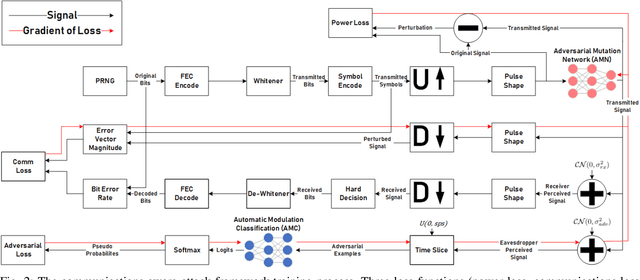
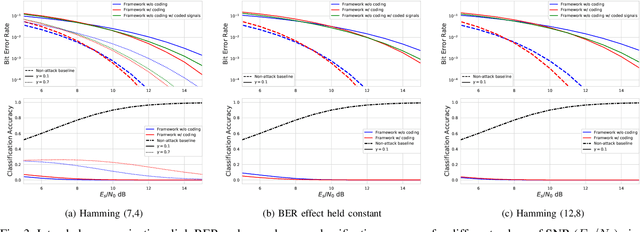
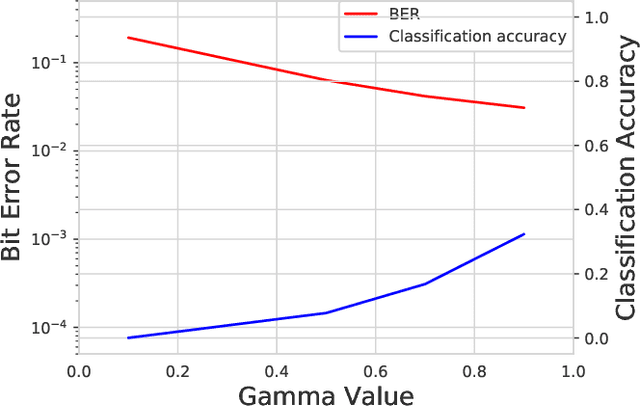
Abstract:Recent work has shown the impact of adversarial machine learning on deep neural networks (DNNs) developed for Radio Frequency Machine Learning (RFML) applications. While these attacks have been shown to be successful in disrupting the performance of an eavesdropper, they fail to fully support the primary goal of successful intended communication. To remedy this, a communications-aware attack framework was recently developed that allows for a more effective balance between the opposing goals of evasion and intended communication through the novel use of a DNN to intelligently create the adversarial communication signal. Given the near ubiquitous usage of forward error correction (FEC) coding in the majority of deployed systems to correct errors that arise, incorporating FEC in this framework is a natural extension of this prior work and will allow for improved performance in more adverse environments. This work therefore provides contributions to the framework through improved loss functions and design considerations to incorporate inherent knowledge of the usage of FEC codes within the transmitted signal. Performance analysis shows that FEC coding improves the communications aware adversarial attack even if no explicit knowledge of the coding scheme is assumed and allows for improved performance over the prior art in balancing the opposing goals of evasion and intended communications.
When Wireless Security Meets Machine Learning: Motivation, Challenges, and Research Directions
Jan 24, 2020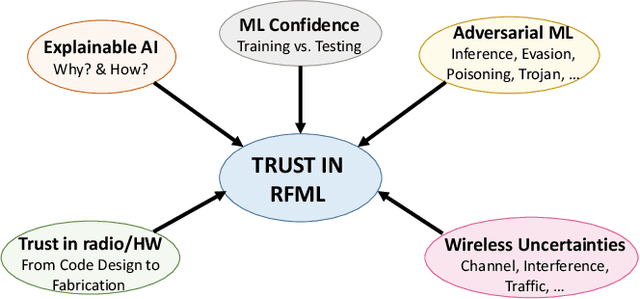
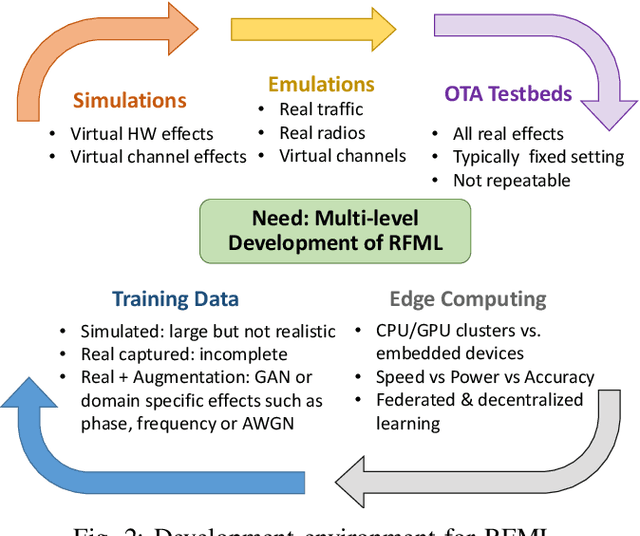
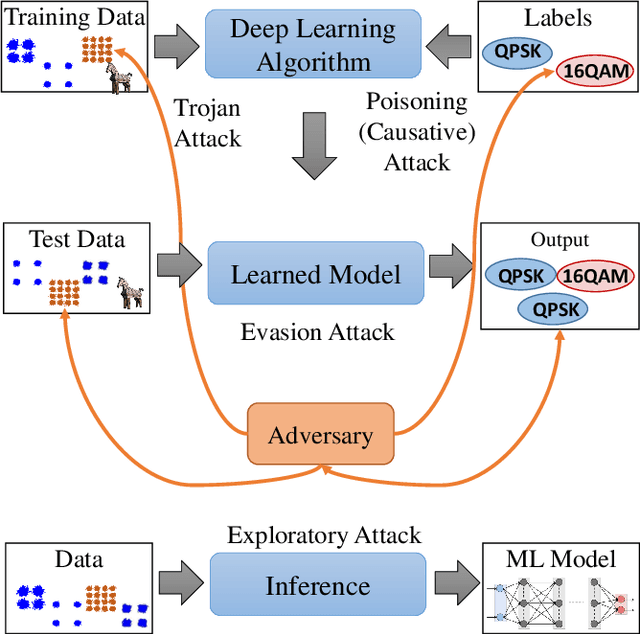

Abstract:Wireless systems are vulnerable to various attacks such as jamming and eavesdropping due to the shared and broadcast nature of wireless medium. To support both attack and defense strategies, machine learning (ML) provides automated means to learn from and adapt to wireless communication characteristics that are hard to capture by hand-crafted features and models. This article discusses motivation, background, and scope of research efforts that bridge ML and wireless security. Motivated by research directions surveyed in the context of ML for wireless security, ML-based attack and defense solutions and emerging adversarial ML techniques in the wireless domain are identified along with a roadmap to foster research efforts in bridging ML and wireless security.
Evaluating Adversarial Evasion Attacks in the Context of Wireless Communications
Mar 01, 2019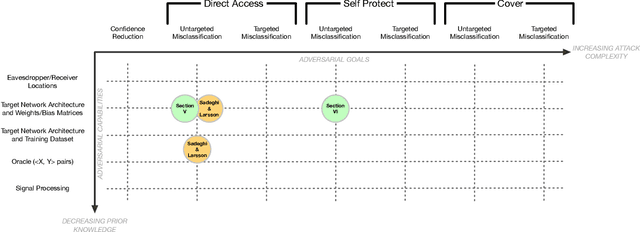
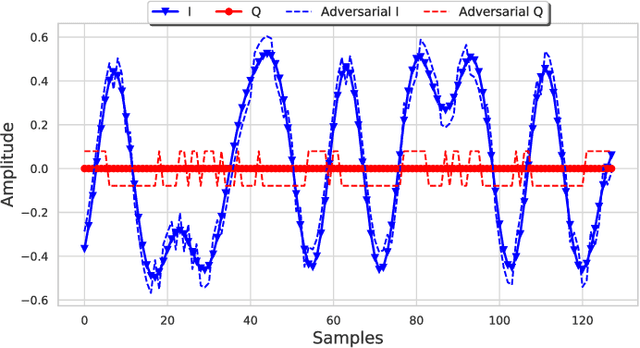
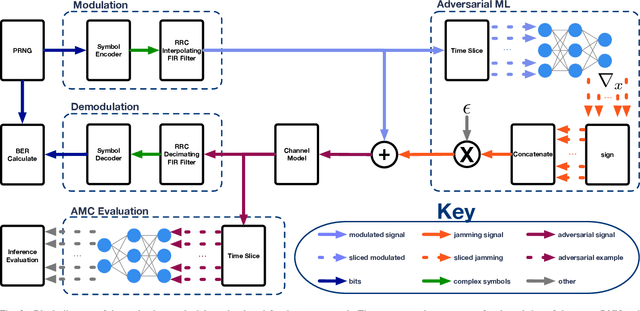
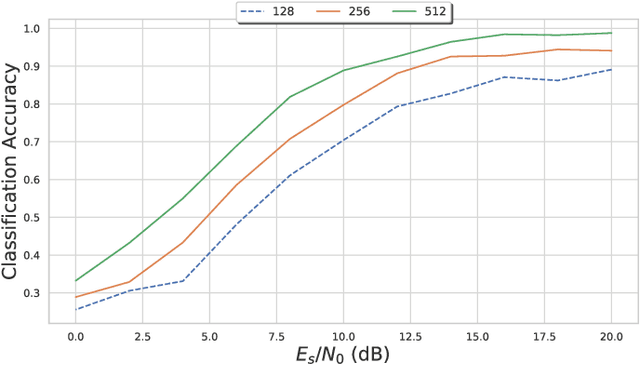
Abstract:Recent advancements in radio frequency machine learning (RFML) have demonstrated the use of raw in-phase and quadrature (IQ) samples for multiple spectrum sensing tasks. Yet, deep learning techniques have been shown, in other applications, to be vulnerable to adversarial machine learning (ML) techniques, which seek to craft small perturbations that are added to the input to cause a misclassification. The current work differentiates the threats that adversarial ML poses to RFML systems based on where the attack is executed from: direct access to classifier input, synchronously transmitted over the air (OTA), or asynchronously transmitted from a separate device. Additionally, the current work develops a methodology for evaluating adversarial success in the context of wireless communications, where the primary metric of interest is bit error rate and not human perception, as is the case in image recognition. The methodology is demonstrated using the well known Fast Gradient Sign Method to evaluate the vulnerabilities of raw IQ based Automatic Modulation Classification and concludes RFML is vulnerable to adversarial examples, even in OTA attacks. However, RFML domain specific receiver effects, which would be encountered in an OTA attack, can present significant impairments to adversarial evasion.
 Add to Chrome
Add to Chrome Add to Firefox
Add to Firefox Add to Edge
Add to Edge